|
Tierra del Fuego
By Boat across the Straits of Magellan
Hostal Costanera finally turned out to be a very pleasant place. The owners lived upstairs, but they cooked, ate and lived on the ground floor among the hostel guests. They were very welcoming, friendly and open-minded. The kitchen was not decorated with the usual inscriptions enforcing cleanliness, the immediate washing up of dishes, etc. The woman cooked, left the dishes in the sink for a couple of hours and, when there was something additional, she then washed them with her own dishes. Breakfast was also unusually good. In the morning before departure, there was no running water in the whole neighborhood. I had filled up my water bottles in the evening already, but the owner came up to me before my departure, apologizing for the water shortage and offering me his bottled water. Really nice. And it contrasted with the hospedaje Mwono in Puerto Natales, where the lady owner lurked in the little room next to the kitchen and when someone came to cook she immediately controlled it, with a tortured expression wiping the stained kitchen counter which I had not managed to wipe immediately after preparing my food. She just did not enjoy the job and with this approach was obviously going to go mad soon.
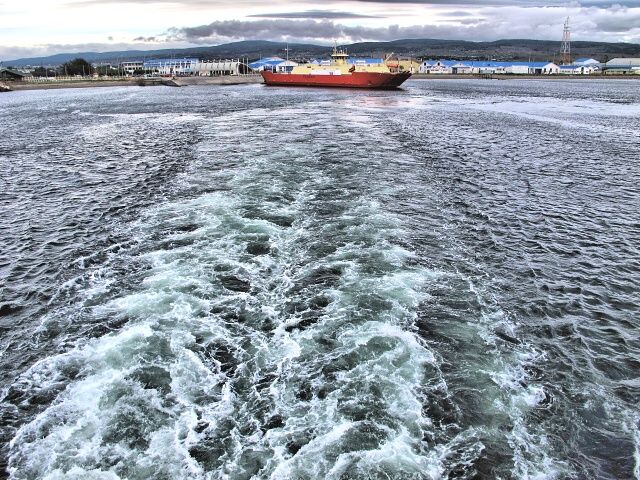
[Punta Arenas] Leaving port via Porvenir
The port was 5 km away, most of the cycling route was along the coast. The boat sailed at 9 a.m. exactly on schedule and we reached the other side of the Straits of Magellan at 11.30 a.m. Thus I found myself on the biggest South American island, Isla Grande, also known as Tierra del Fuego. I was pleasantly surprised. I had learnt in the Information Center in Punta Arenas that the price with a bike would be 10,000 Pesos, but the ticket cost me 5,500 Pesos and they did not want anything for the bike. In Porvenir I had a good fish lunch with a vegetable salad and set off on the last 160 dusty kilometers (plus an additional 40 km in Tierra del Fuego National Park). The road was quite bad in some places, hilly at first. After Cabo Boqueron, a couple of steep ascents and descents followed, and then the road was only slightly twisting. A near-gale was roaring behind me, so I would have moved ahead even with unscrewed pedals. I only sat more upright on the slight hills. Of course, I was pedaling, but just to stretch my legs. The wind was blowing from 5 o'clock to 7 o'clock and, at times, when the road curved and the wind was blowing from the side, I had to get off the bike and push hard against it, bent against the wind. But those were only a few short sections. Thanks to the bad road, the trip was fun and required my full attention and a constant search for an optimal track and crossing of the windblown layer of gravel in the middle of the road. Fortunately, traffic was minimal, and I did not interfere with the passage of the six cars that passed me, but rather stopped at the roadside and waited until they had overtaken me. Otherwise, there was not much to admire, several very poor fishing villages and the usual cows, sheep, horses and guanacos in the surrounding pastures.
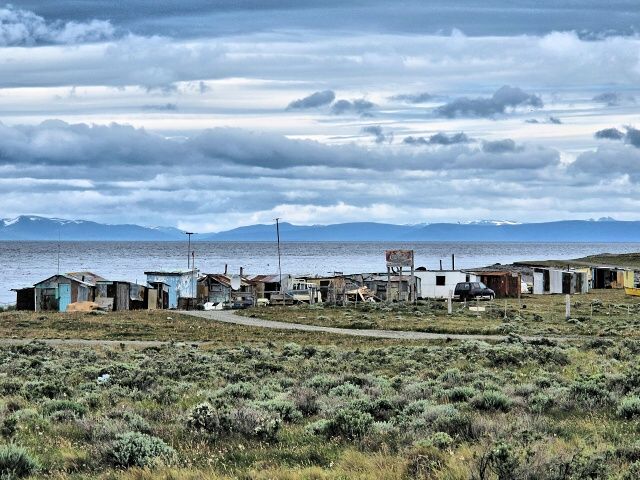
[Near Porvenir] Fishing village
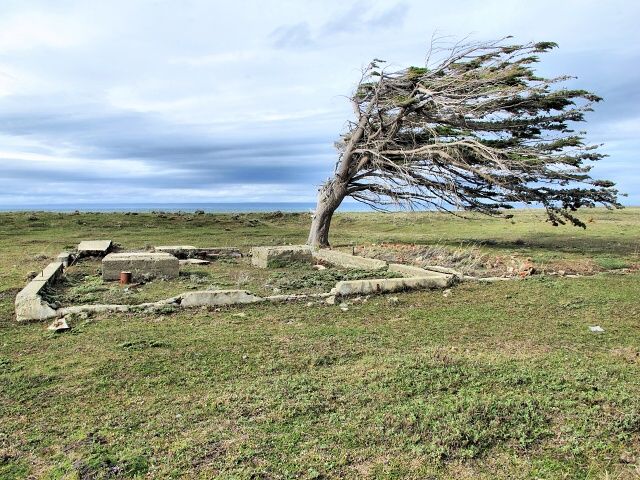
[Near Porvenir] The wind shapes the trees just as it chooses
It was nearly evening and I had to find accommodation. Originally I had thought that I would stay in Onaisir, but it was not on the route, but 4 km against the wind, which would mean at least an hour of hard work. In a wind of this force, the tent would not have endured in the open space; I had to find some shelter. I skipped a bus stop, it was at a crossroads and I would have been in sight of everybody which I do not like. Well, I would find something for sure, I did not worry about it. And I did – a little shed beside the road, although without an entrance door, but in the lee from the right side. It was not even too messy and, most importantly, there was no excrement, either human or animal. The bike fitted in and, after cooking dinner, also the tent, so I was in clover. And the shrill whining wind put me to sleep, so I did not read for very long.
Like a Sailboat on the Raging Sea
The next morning, I thought that if the wind was so strong in Czech Republic it would have been called Hurricane Cyril. I had a problem pushing the bike for 10 meters in the crosswind from the shed to the road. Pedaling was out of the question, I had to apply the brakes a lot. The road fortunately did not have many bends, only a couple of trucks showed up and I always assumed a fixed position away from the road, well in advance, to be able to survive the slap of the wind caused by the passing trucks. Then came Chilean San Sebastian. I got the exit stamp, and after 10 km, Argentinean San Sebastian, where they had a wrongly set stamp and then completed it by writing in my passport with a pen. No inspection of carried food, although I was ready to hide the forbidden foodstuff in my pockets.
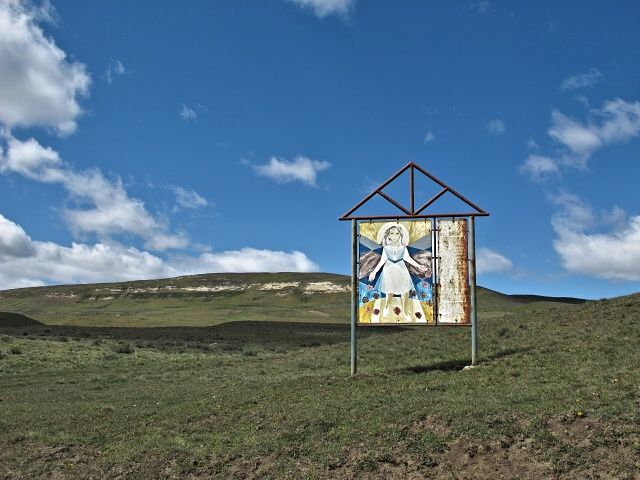
[San Sebastian] The border of Chile and Argentina
Boring Paved Roads
The road followed close to the Atlantic, but the landscape was not beautiful. Desolate pampa, sometimes a petroleum borehole. Support from the wind almost stopped, although it still was blowing very strongly. Cyclists that I met a few days ago had told me that I would have a fine tailwind. But this was not true in the section to the Rio Grande. The wind was blowing from four o'clock and I so had to cycle twisted as if trying on a jacket designed by an incompetent tailor (hunch, lift a shoulder, and you see, it fits like a glove). But for the cyclists in the opposite direction the wind was blowing from two o'clock, which is of course much worse. I warmly welcomed the sign “left-turning bend”, which always meant that the wind would be blowing more from behind. The biggest attraction was a hill with burial chapels, some the size of a garden cottage, filled with figurines, wax from burnt candles, bottles of beer and boxes of wine, clothes and other artifacts.

[Near Rio Grande] A hill with chapels

[Near Rio Grande] A chapel with simple decorations

[Near Rio Grande] The chapel is filled with statuettes and half-empty bottles
Rio Grande
This is the largest town, with 70,000 inhabitants and is the administrative center of the whole region. The main attractions are at the entrance to the city, on one side, a big statue of Christ, on the other side, a huge trout. I tried a hostel mentioned in a guidebook, but it was closed. However, along the way I saw a notice about a campsite. Fortunately I remembered the street name, entered it into the GPS and arrived at Club Nautico camp. It was about 10 blocks from the center on the bay shore. The lady in the office told me that the camp was closed, but I could sleep there without a problem, and if I needed a shower, I could take one in the club after 8 p.m.
I went to the supermarket in the center and again it was confirmed to me that a hungry man should not go shopping. I bought such a stack of food that I was unable to put everything into the bags and had to pull out the backpack and carry some of the goods on my back. Fortunately, I had bought things that I really needed – a pile of vegetables and fruit, bread, oats, cheese, and a liter of beer instead of sweets. The camp had running water, there were windshields so I could easily cook and, after a good dinner washed down with dark Argentine beer, I took a hot shower in the club. And all this was free of charge!
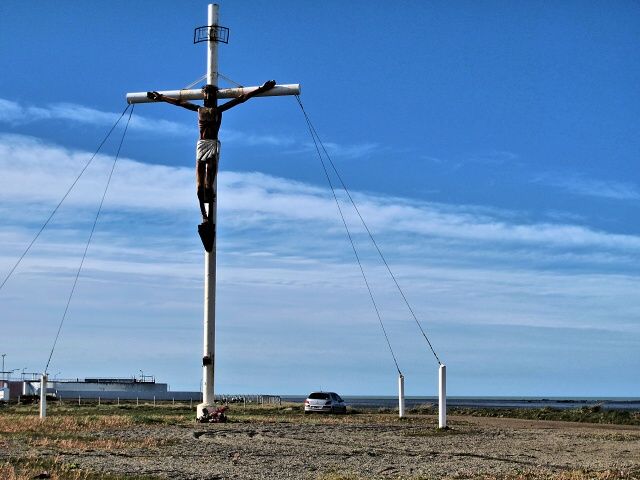
[Rio Grande] Northern entrance of the town
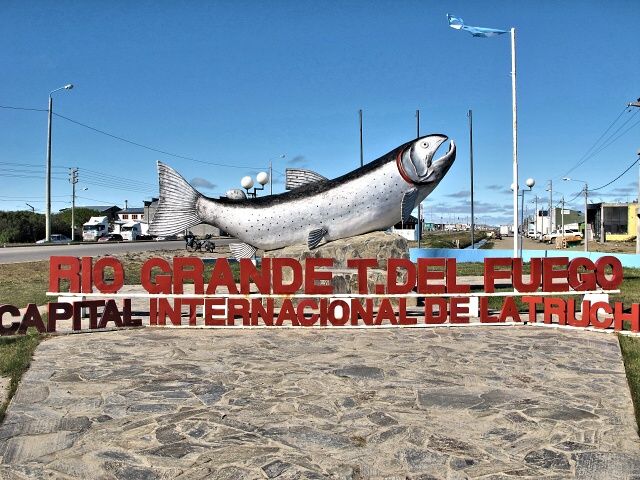
[Rio Grande] Southern entrance of the town
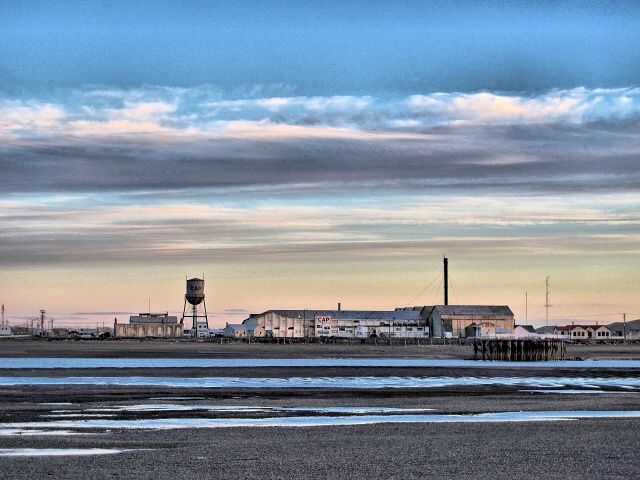
[Rio Grande] A factory opposite the camp
To Tolhuin
The beautiful weather continued, the wind kept blowing, which was agony for the first 10 km, because the exit from the town is almost exactly due West, i.e. against the wind. But then the road turned sharply by 120 degrees, the wind was from behind and cycling pleasure improved considerably. After 60 km, when the road left the coast, the wind was blowing from the side, but thanks to the hills, it was sheltered enough and eventually I did not even notice it. There is a renowned panaderia in Tolhuin, allegedly very friendly to cyclists and with a room where cyclists can sleep free of charge. I had a good meal there, but no one even noticed me, perhaps it was not the right personnel. At the entrance to the town, I picked up some English-language tourist information. According to this, the nearest campsite was at the 2,946th km of Road 3, that is about 5 km before the city in the direction from which I had come. Although I had not seen any camp, there was one lonely, strange complex of buildings, which might have been it. I returned there, a woman came up and told me that there was no campsite and that the information was badly written and that I wasn't the first person trying to get in. She said the campsite was about 20 km away in the opposite direction. It was 8 p.m., the sun sets at 9.45 p.m., so there was enough time for me to get there. But 2 km before Tolhuin, I saw a suitable site near a small lake and slept over there. There was grass and water for washing and, finally, I also needed the mosquito repellent that I had prudently bought about a month ago.
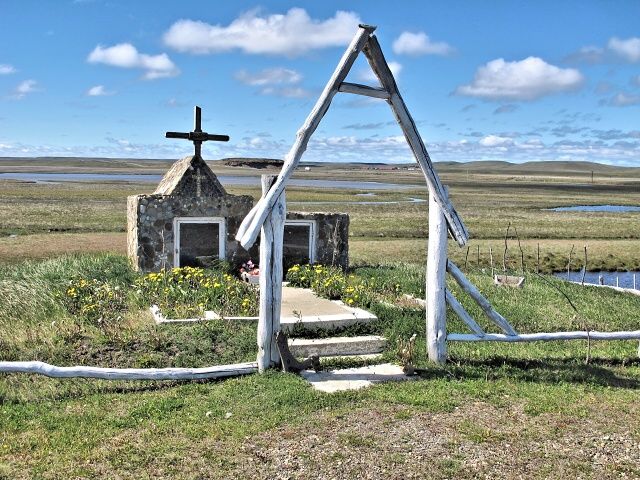
[Near Rio Grande] A chapel by the road
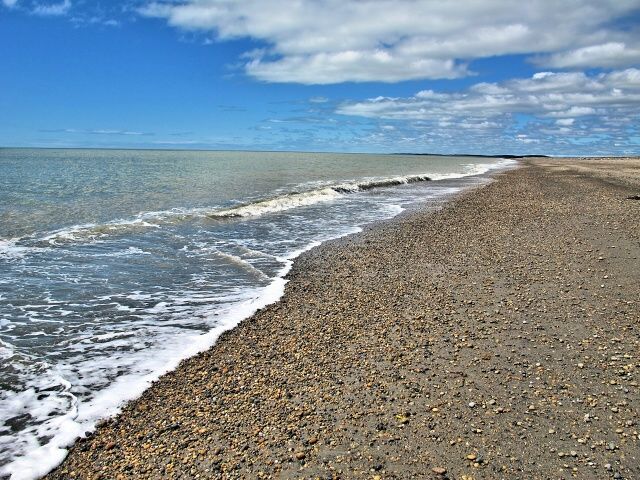
[Near Estancia Viamonte] Boring coast

[NearTolhuin] Road number 3
Slow Goodbye
Weather straight from the pages of a travel brochure, a breeze blowing just sufficiently to dry my forehead sweat and I realized that I was almost at the end of this year’s travels. The cycling was very pleasant, beautiful forests all around, clear waters of Fagnano Lake, lots of birds. Drivers honked at me and waved from their car windows. Everybody knows that long-distance bikers usually end here after several months of travel and so wanted to sweeten it. I was as happy as the proverbial lark, although in the background nostalgia quietly gnawed at me, that another nomadic period of my life was over. But, as is the case of essential optimists, I had already started thinking about where I could go the next year. Hopefully it would not be to Pelhøimov Crematorium (as is joked about in the Czech movie, My Sweet Little Village). My thoughts were disturbed by several kilometers of uphill cycling to Paso Garibaldi, but the slope wasn't steep, and there were those beautiful views of Escondido Lake. Then, 25 km from Ushuaia, I saw the southernmost ski resort in the world, conquered a few hills and reached Ushuaia.
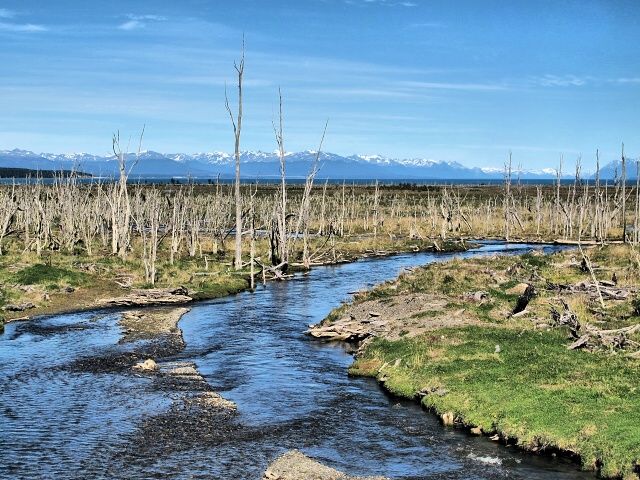
[Tolhuin] Rio Turbio flows into the Fagnano lake
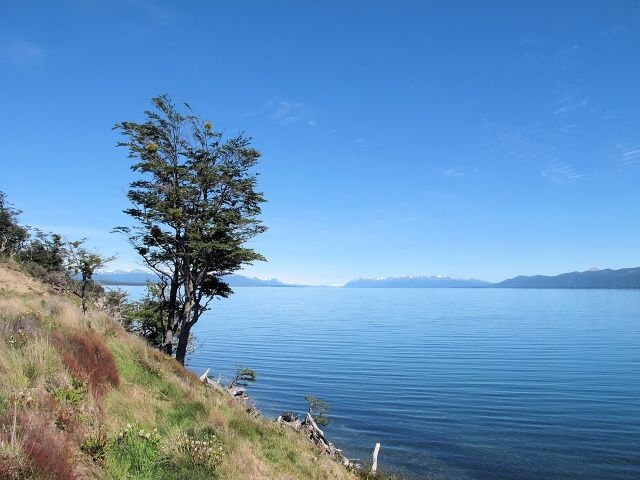
[Kaikén] Fagnano lake
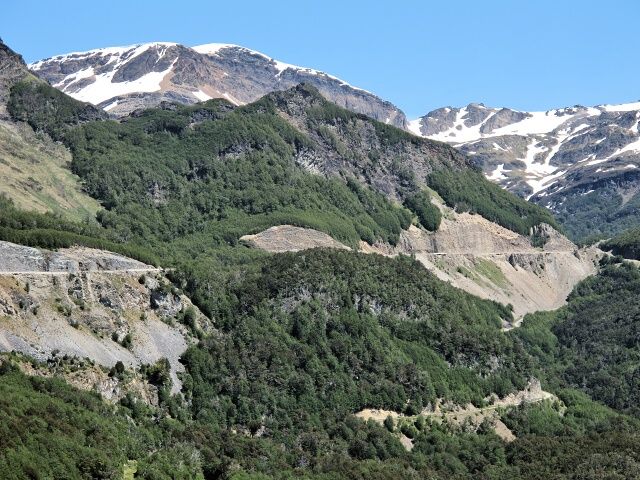
[Escondido Lake] Climbing up to the Garibaldi mountain pass
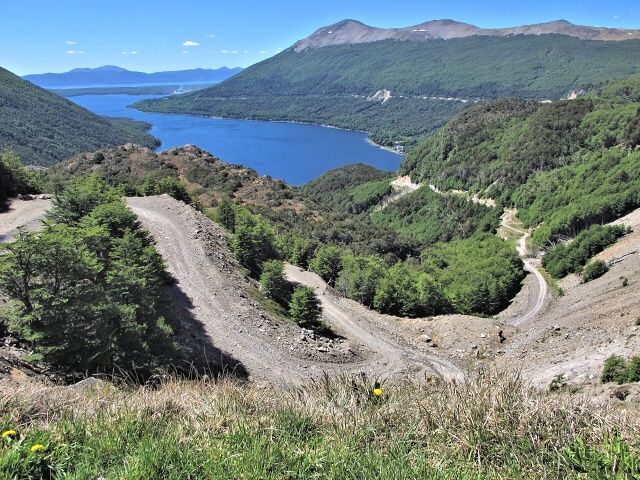
[Garibaldi Pass] Escondido lake

[Cerro Castor] Beaver Mountain is one of the most important Argentinian ski resorts
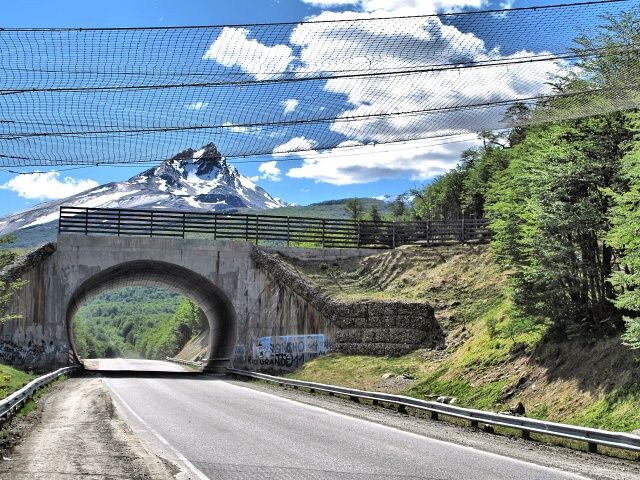
[Cerro Castor] Ski slope bridge crossing the road

[Near Ushuaia] Impressive mountains around the road
I checked the prices of accommodation at the Information Center. A single room in a hostel was a typical 250 Pesos (about 50 USD), but it was high season and so I might have a problem finding accommodation. I got maps, a list of hostels with single rooms, the address of the city campsite if I did not find anything, and left. I succeeded at the third hostel, a room for 200 Pesos with a kitchen and WiFi. I paid for one night, as I wanted to spend the other two days camping in the Tierra del Fuego National Park.
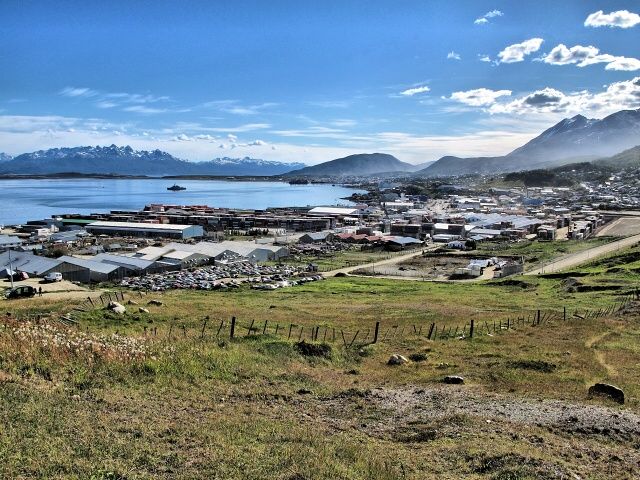
[Ushuaia] The town situated beside the bay
Tierra del Fuego National Park
The entrance to the park is located 12 km from the city, partly on a dirt road. Road no. 3 in the Park is naturally dusty. I made a firm resolution to reach its end, this is the de facto end of civilization. On the outskirts of town, I ran over a hole in the road, a cracking sound and the front pannier rack fell into the wheel spokes. I managed to avoid a fall and found that the oldest wood reinforcement had broken. I cycled some more with the right front bag loaded on to the rear carrier, found a convenient branch, straightened the deformed pannier rack slightly, reinforced it with the new stick and that was that. Luckily I still had some tightening tapes, my universal repair tool. Also the battery in the cyclocomputer died without warning. My time on the road had simply expired. In the Park, I cycled around both bays with docks and in the drizzling rain asked to be photographed at the sign marking the end of the 3,067-km long Road no. 3 which starts in Buenos Aires. Then it began to pour. I visited the remaining places accessible by bike and decided to return to Ushuaia. I returned to the same hostel, the room was still available and they gave me a discount, so I knew where I would be sleeping for the last four nights.
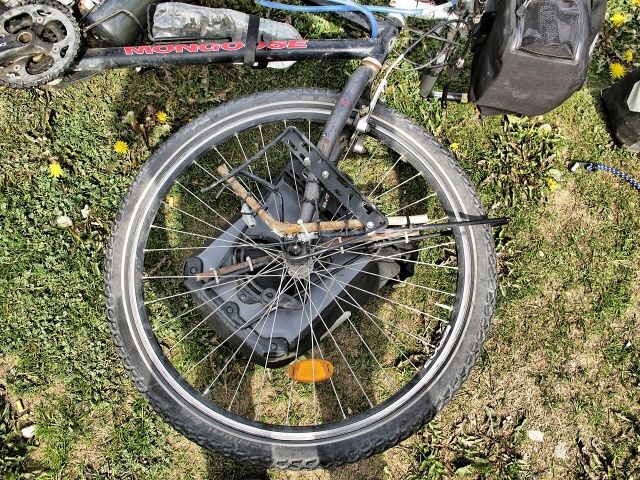
[Ushuaia] The timber support broke down at just the right time
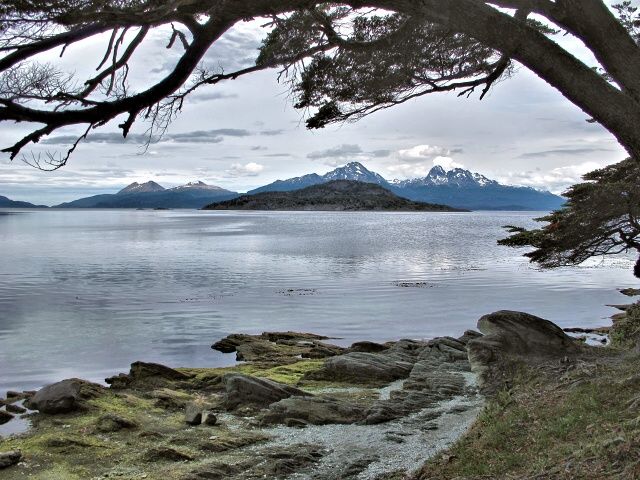
[NP Tierra del Fuego] Ensenada bay
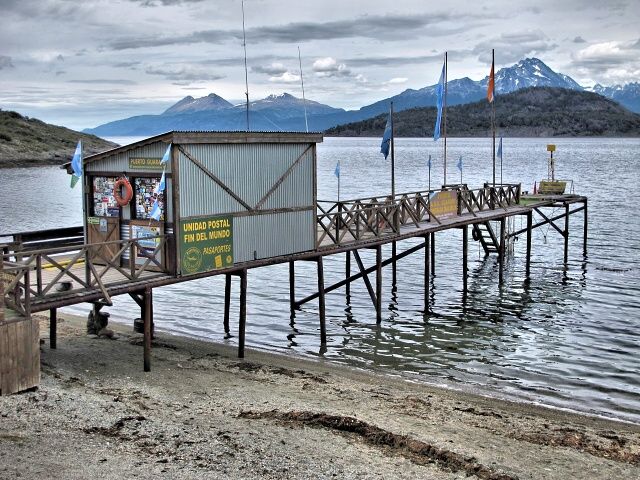
[NP Tierra del Fuego] Pier in Ensenada bay
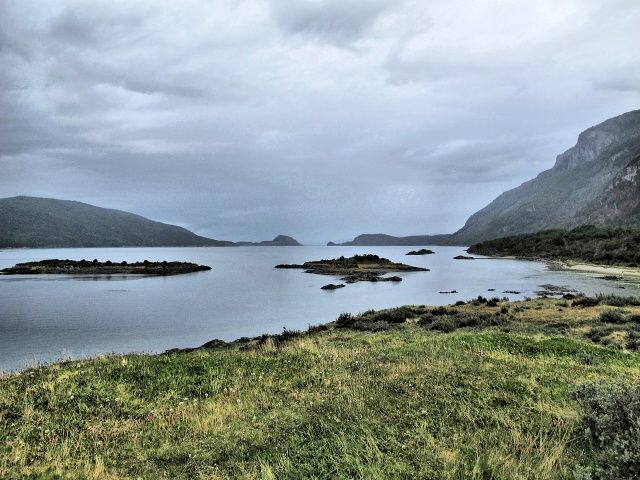
[NP Tierra del Fuego] Lapataia bay

[NP Tierra del Fuego] Birds are not afraid of people
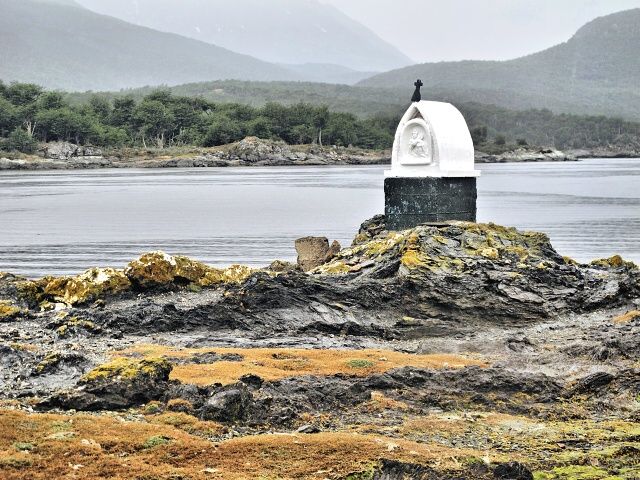
[NP Tierra del Fuego] A chapel at the world´s end in Lapataia bay
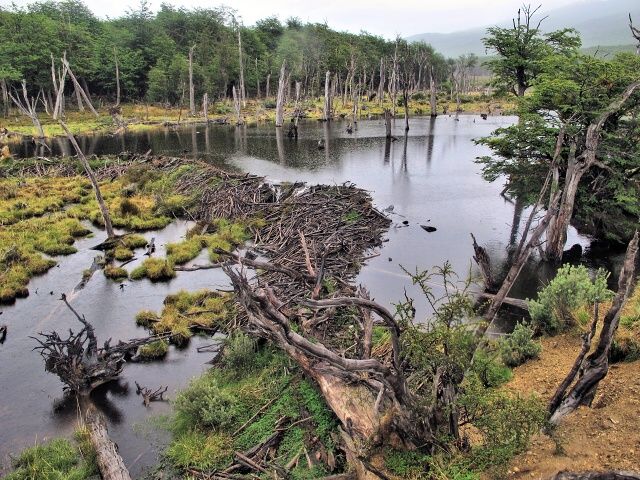
[NP Tierra del Fuego] Beaver´s dam
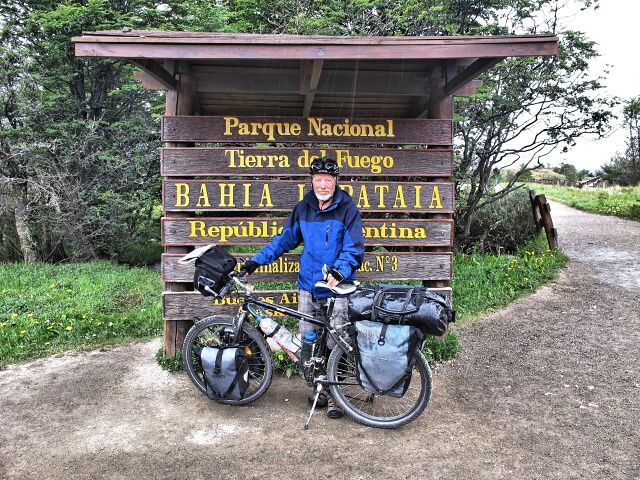
[NP Tierra del Fuego] The end of Road number 3 at Lapataia bay
Hanging around in Ushuaia
On the Sunday morning, it was still raining heavily, so I slept some more. Originally I wanted to go to the local Martial Glacier, which is 7 km from the center and has a cableway serving a small ski resort in winter. The big ski resort – Cerro Castor – 25 km from the city, has 22 ski slopes, 3 cableways and 1 ski-lift and is the largest ski resort in Argentina, the locals say. But it cannot be compared with alpine resorts at all and, moreover, prices are significantly higher. After all, Patagonia and Tierra del Fuego are the most expensive regions in Argentina, you can tell by the prices of accommodation, transport and food. In the afternoon, the weather gradually improved, so I walked around the town, looked at it from the other side of the bay, from the Airport and the local flying club. The club has a short but concrete runway, mainly providing sight-seeing flights for tourists. And they have a very nice historical Heinkel aquaplane.
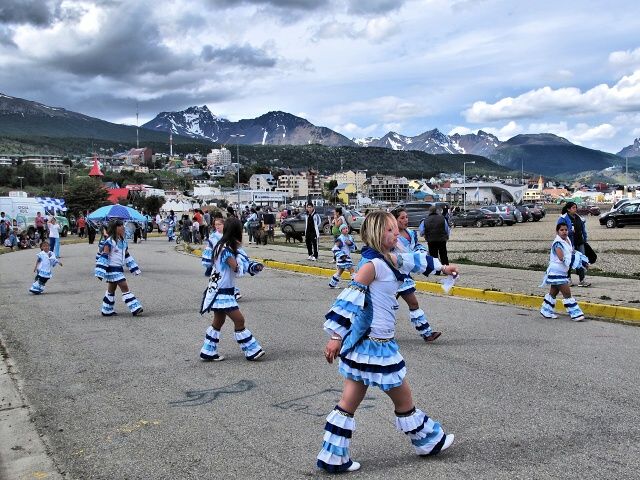
[Ushuaia] Street dancers enliven a Sunday with their performance
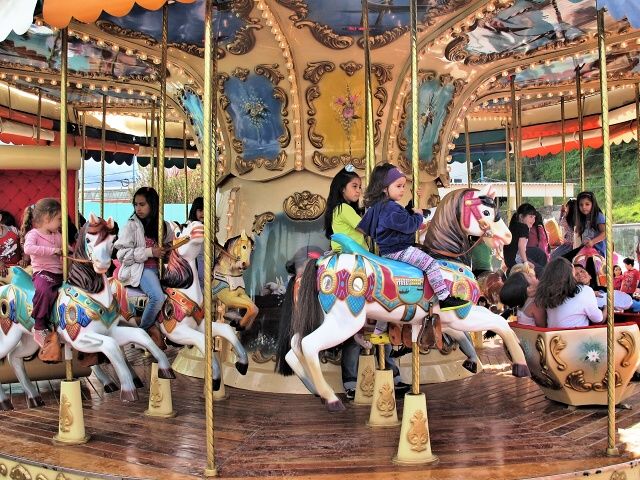
[Ushuaia] Children whirling around on the carousel
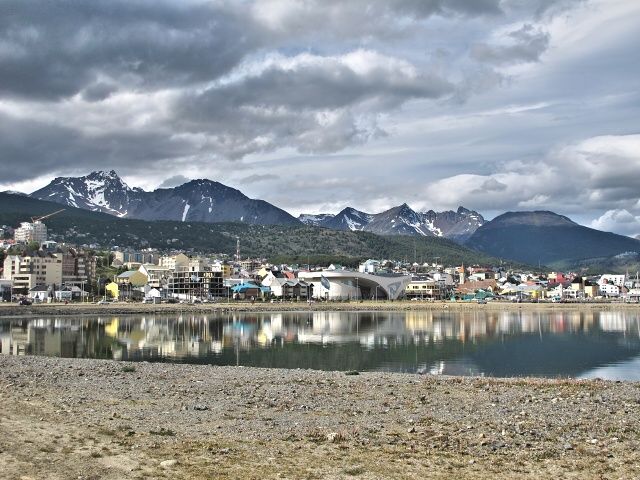
[Ushuaia] The town center with conspicuous casino

[Ushuaia] Sailing boat returning to port
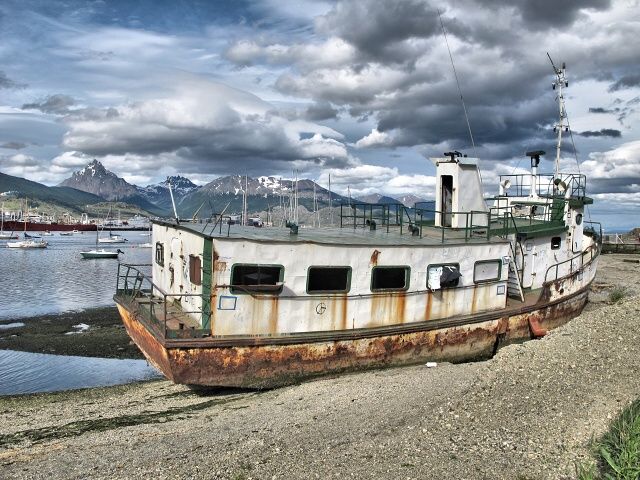
[Ushuaia] One of the shipwrecks on the coast
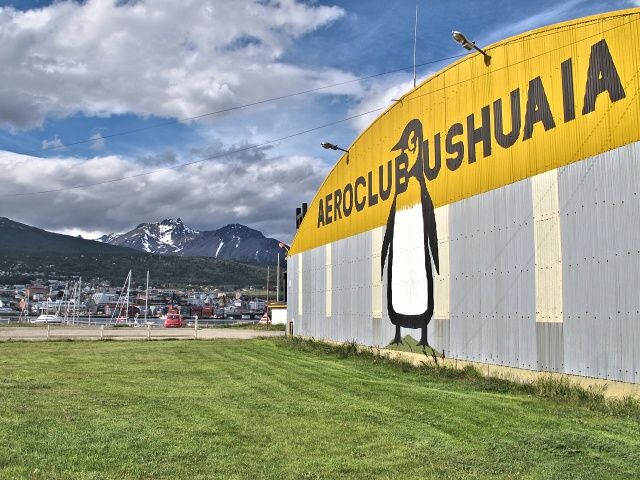
[Ushuaia] The flying club has a penguin as its mascot, which, unlike its members, cannot fly

[Ushuaia] Old Heinkel aquaplane exhibited next to the hangar of the local flying club
The "bird incubator" in the Sant Christopher shipwreck was also interesting. Wooden crates are attached to the ship and in them are freshly hatched birds. The smallest ones are the farthest from the boat and the bigger they are, the closer they are to the ship. Adult individuals –and there are many of these—occupy the decks of the wreck.
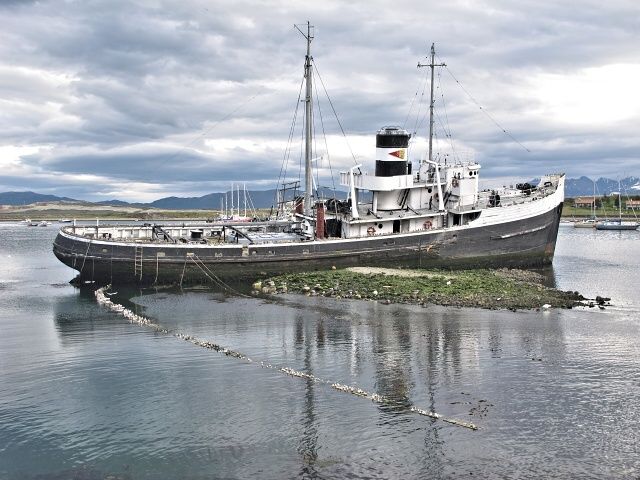
[Ushuaia] The shipwreck now occupied by birds, the white line is the new-born birds
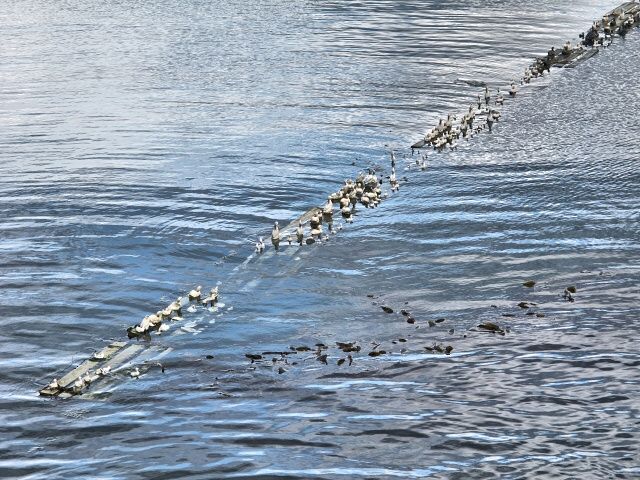
[Ushuaia] New-born birds waiting in line to board the ship
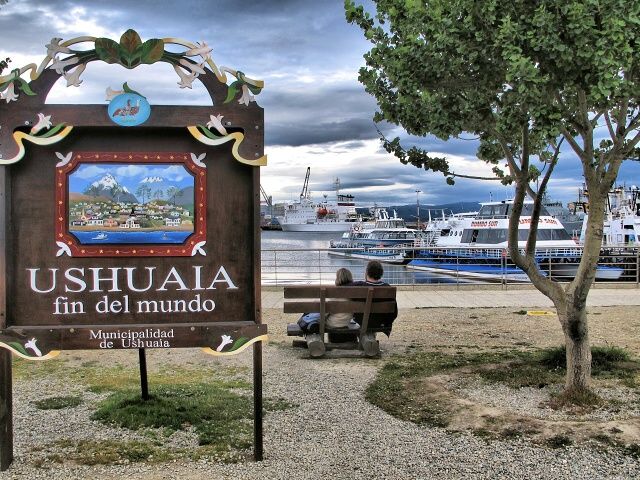
[Ushuaia] The port for ships sailing to Antarctica
Logistics
On the Monday, all the stores were open and I had three main tasks – to get a box for the bike, a box for the luggage and shrink-wrap foil for the final packaging. The box for the bike was not a problem, right in the first of the two bike stores they even forced two of them into one for me. To explain, they had been using the box for waste and the intact box contained another folded box – they told me pleasantly but firmly, take it all or leave it as it is. I got the box for my belongings in a shoe store, but it seemed small to me. However, I spotted a really big box for garbage. It was full of other boxes and plastic packaging, so I made a substitution and threw the contents of the big box into the smaller one, without making a mess. Then the big box seemed too big, but I persevered and decided to reduce it after packaging, if necessary. Shrink-wrap foil was the biggest challenge, but after an hour and three different stores, I was finally directed to a store on the periphery where I bought it at a price more than three times higher than in Santiago before flying to Easter Island.
Then I had to decide about transportation to the Airport (the International Airport, not the flying club). It is very close, about 7 km from the hostel where I was staying. In the taxi company, I inquired about the possibility of transporting me in a bigger car into which my boxes would fit. I expected an answer such as: "At what time and where should we send the car?" and "This is the price." Instead, ordering a Wednesday transportation on a Monday seemed too troublesome to them, so they said, "Call us on Wednesday, and if we have a bigger car, we will send it." So, no deal with you, gentlemen, I will go on my own. I took the folded box for the bike, attached to it the folded box for the belongings and wondered what would be the best way of assembling the 1.20 x 0.5 m monster to the carrier to prevent it being blown away by the wind. Finally, I told myself that if I carried the backpack with sleeping bag on my back, it might work. Thus it was clear that, after all, I was going to the Airport under my own steam, as always, and that the final packaging would take place at the Airport.
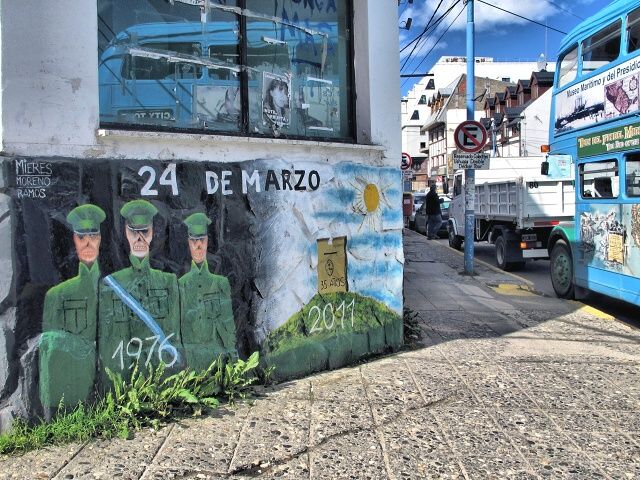
[Ushuaia] Graffiti in the center is reminiscent of the military government, which was accompanied by plenty of illegality and violence
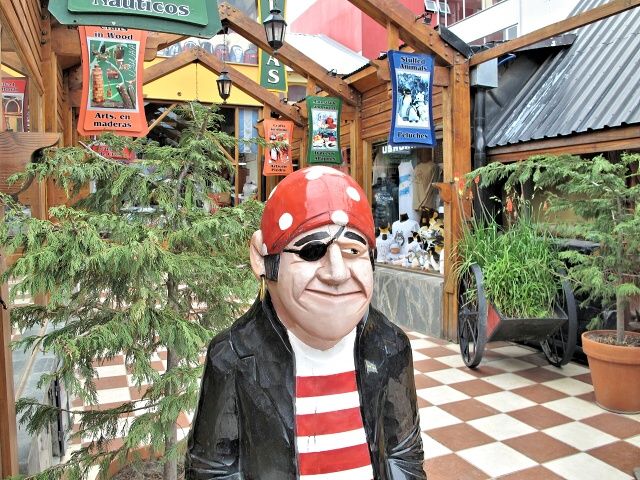
[Ushuaia] Usual fun stuff for tourists: a pirate in front of the souvenir shop here
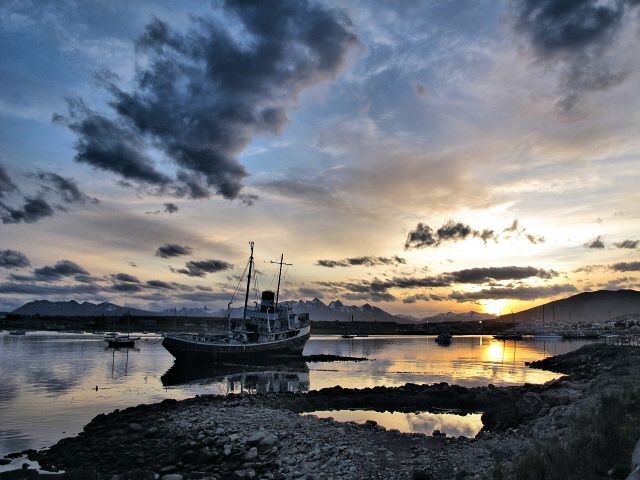
[Ushuaia] The Saint Christopher shipwreck at sunset

[Ushuaia] Marina
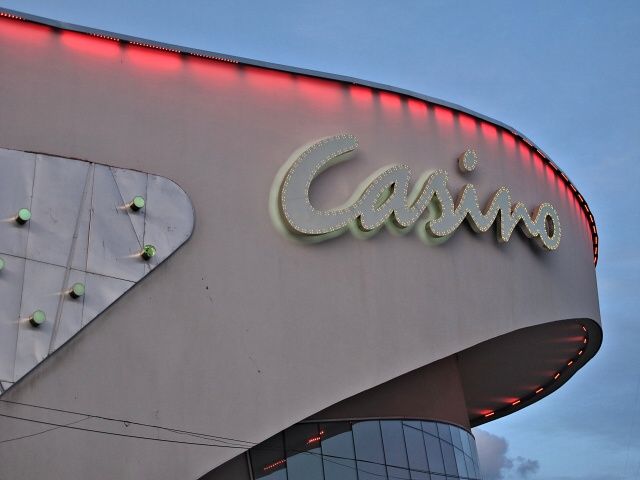
[Ushuaia] The biggest and newest casino in town
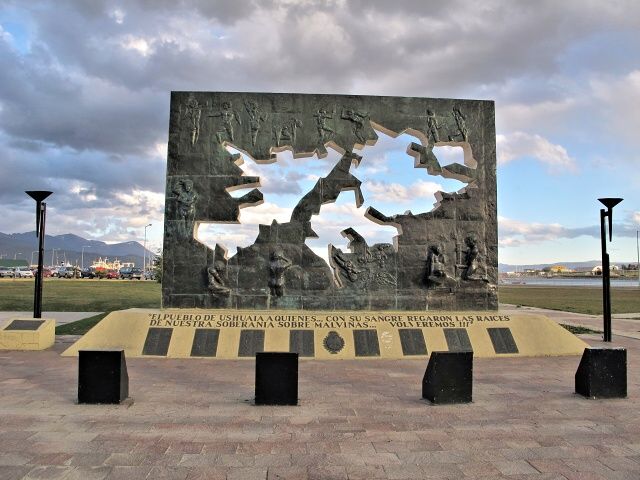
[Ushuaia] A memorial to the Malvinas' heroes: Argentina has not faced up to the loss of the Malvinas Islands, which is indicated on their maps as belonging to them
Penguins
Amidst all the preparations, I had managed to book a trip for the Tuesday to Martillo Island, where there are colonies of two kinds of penguins. Gentoo Penguin are smaller, but there are a lot of them. There are only 25 pairs of the bigger and rarer Magellanic Penguins, but they are considered a success, as they are reportedly almost extinct. Several agencies organize boat tours that enable one to see the penguins only from on board. Only one travel agency takes people directly on to the island. Fortunately, they had one last available place, so on the Tuesday morning I set off. Only 20 people can be on the island at a time. We traveled by minibus to the famous Harberton Station, from which boats depart for the island. Then, after a fast 15-minute boat trip, we arrived as the first visitors of the day. Alluvial timber defines the area where one is allowed to go on the island, but the penguins were surprisingly close. Nesting birds sitting on the eggs were literally at our fingertips in some parts, but of course nobody touched them. The hour dedicated for staying on the island passed in a flash and we were rushed back to the mainland again. I really enjoyed the visit and was glad that I had managed to get a tour of the island.
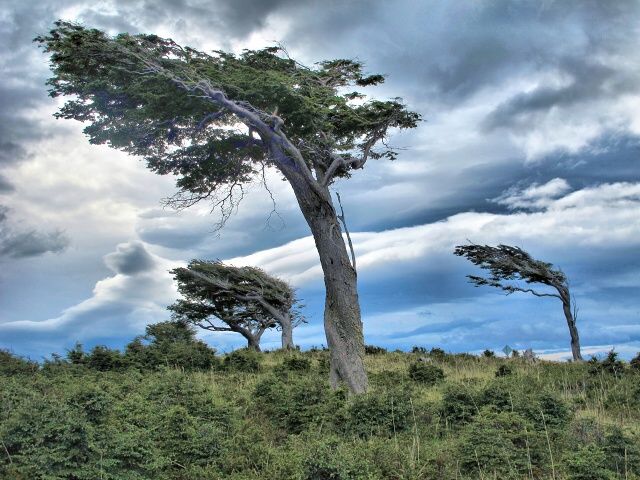
[Near Estancia Harberton] Where does the wind here come from, can you guess?
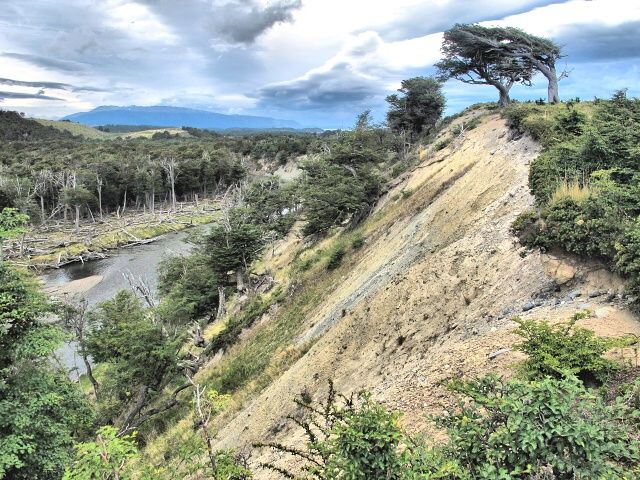
[Near Estancia Harberton] One of the tributaries of the Beagle Channel

[Near Estancia Harberton] Beagle Channel
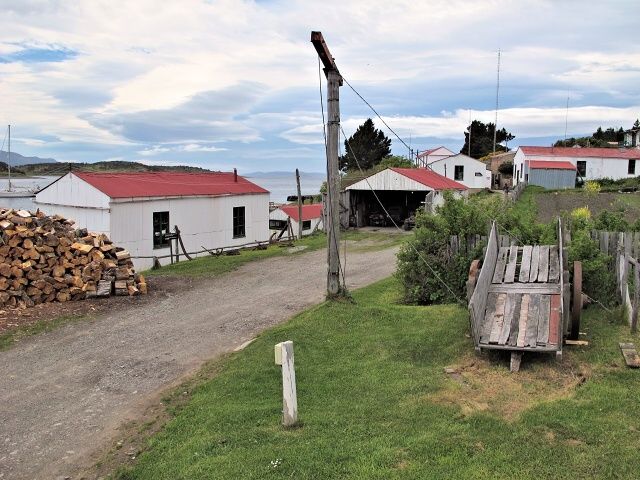
[Estancia Harberton] One of the first “stations” in this part of the world is nowadays an important tourist attraction, but still functions as a farm
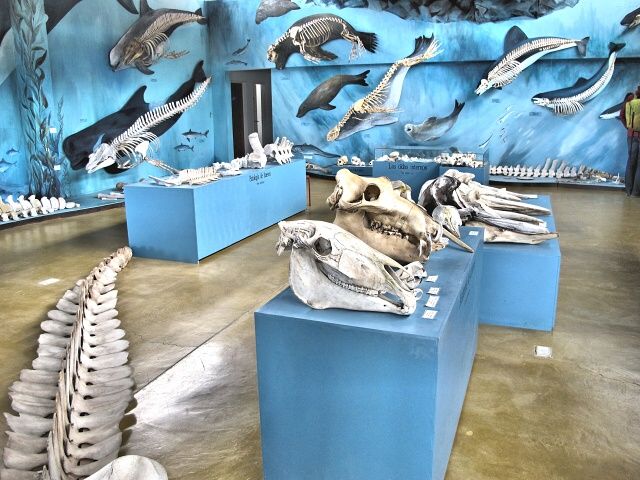
[Estancia Harberton] Acathusum museum is focused mainly on big sea mammals: whales and dolphins
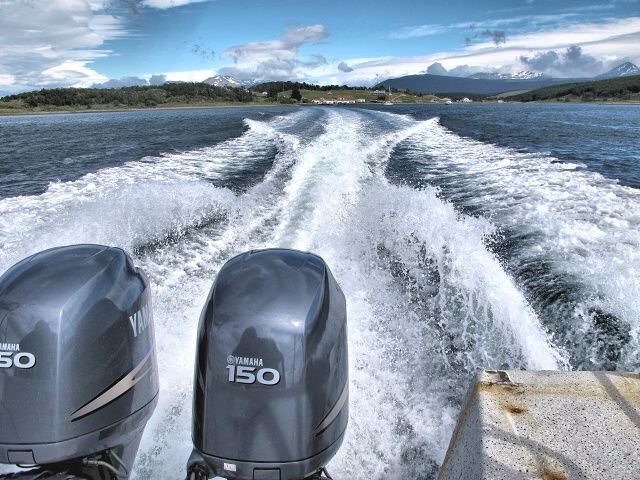
[Estancia Harberton] Leaving the station; within 15 minutes we will see the penguins
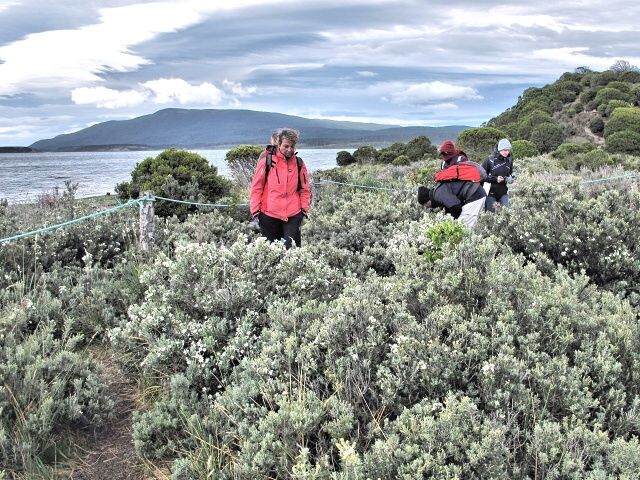
[Ostrov Martillo] Fellow tourists observe nesting penguins in the bushes
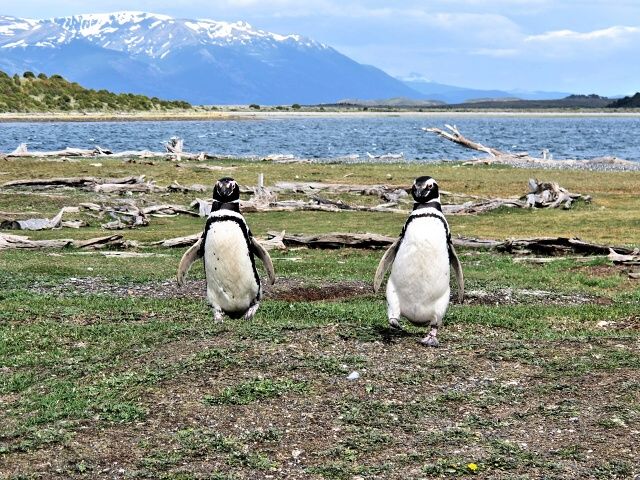
[Ostrov Martillo] Magellanic Penguini hurry to welcome me
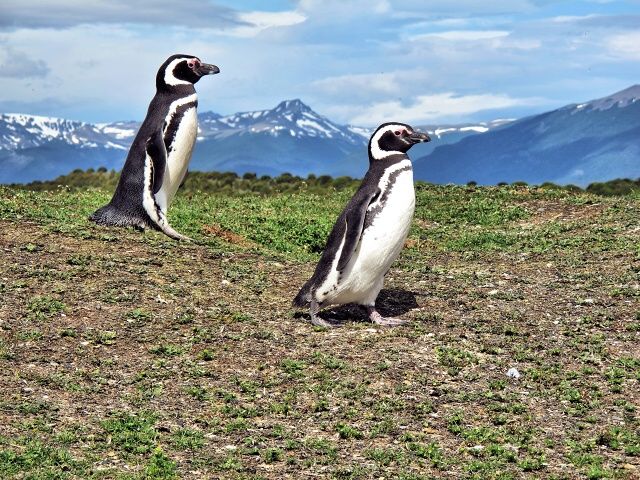
[Ostrov Martillo] Gentoo Penguini on their walk
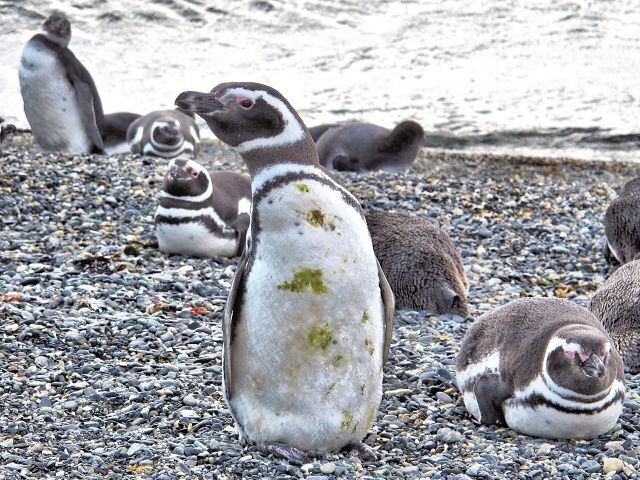
[Ostrov Martillo] This morning I had eggs for my breakfast and I haven´t washed myself yet
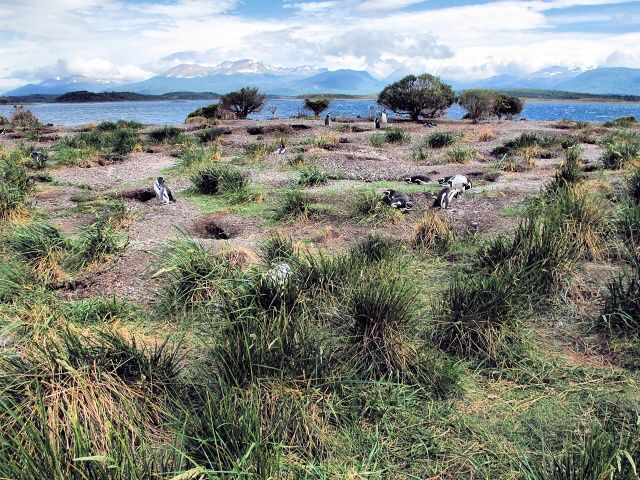
[Ostrov Martillo] A roost of the 25 pairs of Magellan penguins
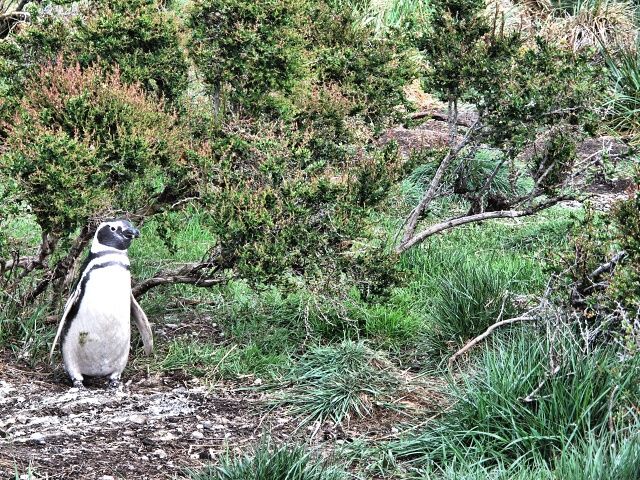
[Ostrov Martillo] A penguin popped up from the undergrowth
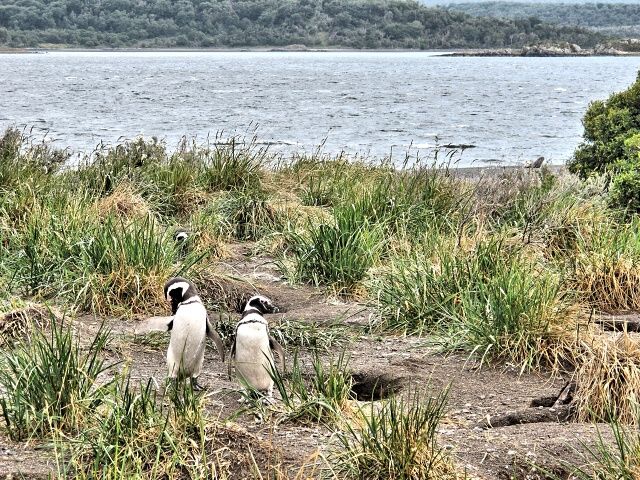
[Ostrov Martillo] A couple at their nest

[Ostrov Martillo] Sometimes it is necessary to bath and catch some fish for lunch
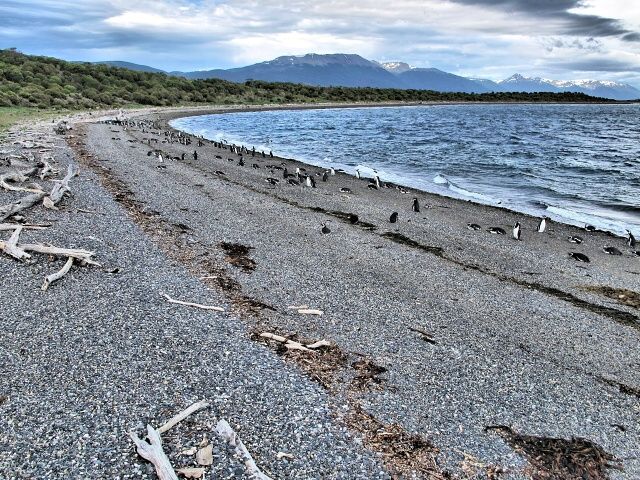
[Ostrov Martillo] The coast filled with penguins at their lunch time
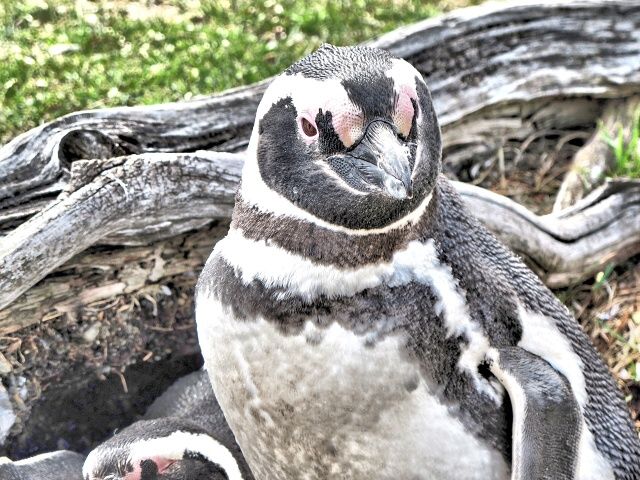
[Ostrov Martillo] Because of the sensitive attitude of visitors, penguins are not afraid of people
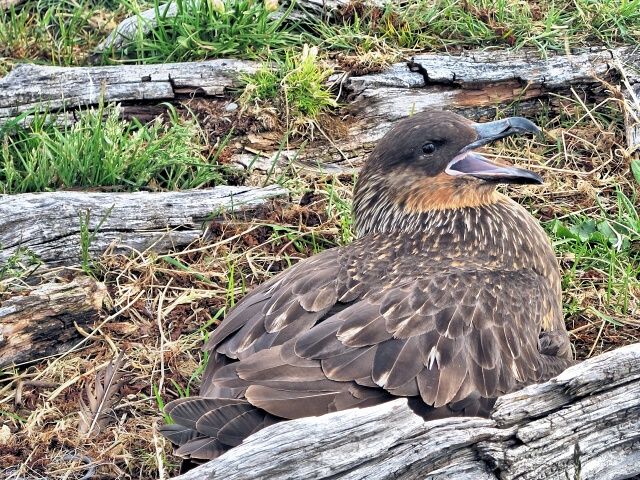
[Ostrov Martillo] A bird is brooding and swearing at me because I am too close
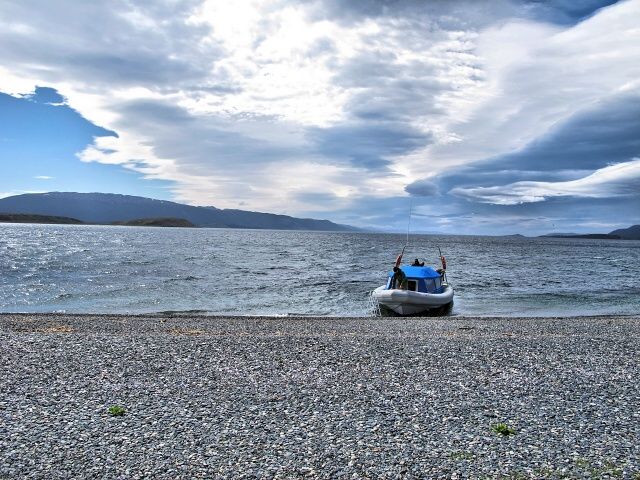
[Ostrov Martillo] An hour later, another boat arrived with tourists, so we had to leave
Flight Home – Phase One
I left the hostel at 8 a.m. It was not raining, but after leaving the town the strong wind attacked the uncharacteristically loaded bike. In some parts, I rather pushed the bike beside me so as not to be knocked down by passing cars. In the last stage, I used the wide sidewalk and safely reached the Airport. Then for two and a half hours I packed diligently and the result was two professionally wrapped boxes. The box for the bike actually turned out to be quite small, but I removed both pannier racks and, after removing the handlebars and wheels, everything fitted in. The size of the box for my belongings was just right. It only seemed quite heavy, so I rather removed the tent and put it into the luggage I was taking on board. I had wondered what they would do about the weight at Check-in, but they did not bother about it at all. The first phase, that is, overweight without paying, was successfully accomplished. However, then things got worse. I wanted to have a beer during the flight, but it was not available and I could not even buy one. Well, I would survive, I would have it in Buenos Aires, I consoled myself.

[Ushuaia] Outside the Airport; compact boxes and plastic wrap on the carrier
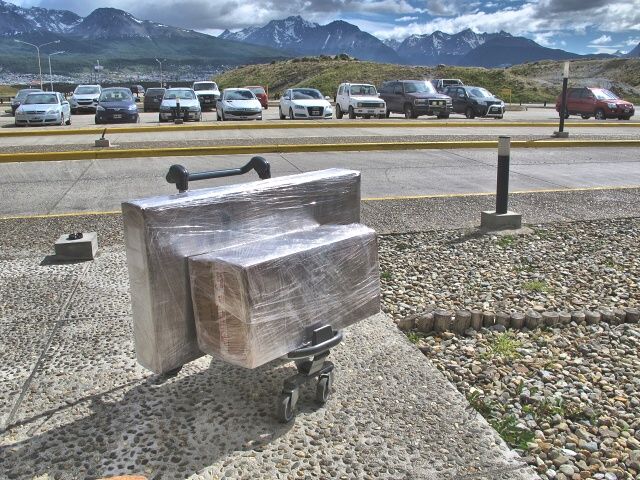
[Ushuaia] Almost 3 hours of work; the result: these 2 professionally wrapped boxes
My follow-up flight was on the next evening. Originally I was to arrive in BA before midnight. During my travels, the time had been changed because the original flight was rerouted to a domestic airport and I would have to somehow transport my luggage across Buenos Aires. I arrived at 5 p.m. and planned to leave the luggage in the left-luggage depot at the Airport, go to the city, visit the center, sleep overnight and take the flight on the following day. But oh-oh, there was no such Depot at the new International Airport, and apparently never would be, for security reasons. Not to omit any possibility, I asked Air France whether they could clear my luggage in advance for the following day, but of course that was refused. The only option was to hire a taxi, load the luggage into it and drive around hostels in the center to find accommodation. But the idea of carrying with me two bulky, heavy boxes did not impress me at all. So I stayed at the Airport, I would sleep through the time there somehow until the following day at 2 p.m. when I could finally get rid of the boxes. Good thing there are baggage carts and I did not have to hire a porter.
Finally, this is the End
I checked in, paid 100 USD for the bike, which was better than the 100 EUR I had paid for it in Prague. However, when I am rid of the bike and tatty wanderer’s rags and change into a civilized man, I begin to get bored. The beginning of any journey is also bad, before I am sitting on the bike, I always wonder what mad scheme I have come up with, where I will be sleeping in the freezing Altiplano and so on. And this year, this phase was very long due to the acclimatization to a high altitude. But as soon as I first step on the pedals, all doubt and gloom are dispelled and I start to enjoy it immensely.
Weather and Route
My greatest concerns had been for the weather, as I wanted to be home for Christmas, so I had started off early. In Bolivia this makes no difference. The Altiplano is always warm during the day and freezing at night, you have no choice there. Southern Chile and Argentina are usually cycled from the end of December and particularly in January and February. But I cannot complain, as I had snow falling for only two hours, and the rain and wind were the same as if I had travelled later. Some areas were quite cold, so I appreciated the insulated soft-shell jacket bought in Puerto Montt. Moreover, it was not high season yet, so I had no problems of finding accommodation (except in Punta Arenas).
The Bolivian Altiplano can be traversed basically via two routes. I chose the longer one, but do not regret it. In Northern Chile, three days of cycling in the Atacama Desert were enough for me and I did not feel the need to struggle through another 1,000 km there. The desert is always the same, the difference is just the time when the strong wind starts blowing from the sea (from the West). Sometimes it is at 11.30 a.m., sometimes at noon. The Chilean Lake District was also nice, but I left it too quickly because I wanted to catch the ferry from Quellon in Chiloé to Chaitén and reach Careterra Austral. Only on board I found out that, from this year, it is possible to go to Careterra Austral from Puerto Montt all the year round, as all three ferries to Chaitén are in operation. In previous years, this was possible only during the peak season from December to February. For the rest of the trip, I followed the routes most frequently used by cyclists.
Experience with Equipment
I have written enough about the problems with pannier racks; it is necessary to use a different system of gripping than seating of the carrier screwed into the frame via a hole.
Schwalbe Marathon Extreme tires are great, lightweight; a rear tire would last at least 8,000 km under these conditions, the front tire even longer. The reinforced sides are very resistant and never puncture when cycling over sharp rocky terrain. The only reservation – I would prefer at least a 26 x 2.25 size to feel better in the terrain than with a width of 2.0. A small curiosity – thanks to the tire tread, small stones “shoot up” perpendicularly in the direction of travel. I have never seen anything like this before.
The Kindle Reader e-reader came in very useful. In addition to three Lonely Planet guidebooks, I had dictionaries (English-Spanish, Spanish-English), a copy of essential documents in PDF format (passport, ticket, insurance) and a lot of reading matter on the Kindle. I often read in the tent at bedtime, which resulted in a high consumption of batteries in the reading light. The greatest weakness of the guidebooks are the maps. I will try to install upgraded files, perhaps Amazon have meanwhile improved them.
The Garmin Oregon 550 GPS navigation was indispensable, especially on the Southern Altiplano. I also used it for detection of altitudes in places where I spent the night. I also used it occasionally for determination of the terrain profile on a planned route, but I think it is measured in the air line and not on the road, so it is quite inaccurate. The GPS was very useful when searching for accommodation addresses in larger cities. I will have to add a holder on the handlebars or handlebar stem.
Ortlieb bags are great. I had a Classic in front and a Plus at the back – they are lighter, but their disadvantage is that they get dirty easily from the outside, and I was unable to clean some spots (which basically did not matter because they took on a cheap and cheesy appearance and thus did not attract thieves). The mounting system of the handlebar bag ensures a firm but flexible grip, the bag absorbs shocks and does not hit the brake levers so it does not damage them. But be careful during the first installation not to cut the cable as recommended by Ortlieb - subsequent fixture is difficult with the shorter cord and I played with it at night at the La Paz Airport for more than an hour. The map case is also excellently designed and, even after five hours of cycling in intensive rain, the inserted map did not get wet.
The gas cooker was a good choice, gas cartridges were available in nearly every city, often in hardware stores. Although Kolimax dishes are lightweight, every year I am annoyed that the shallow bowl, which also serves as a lid, does not hold on the bigger bowl and slips aside. Perhaps I will finally resolve to replace it, it is quite worn anyway.
The AT tent by Jurek is very light, it weighs less than 2 kg which is good for a self-supporting double-skin tent. But it is very small. When I, on rare occasions, also put the bags into it (usually I leave them on the bike), it was very crammed inside. And due to the absence of an anteroom it is not possible to use a cooker in rainy weather.
The Koteka 500 sleeping bag by Sir Joseph is excellent – I slept in the 800-g bag on the Altiplano in outdoor temperatures of minus 15 degrees Celsius and did not suffer from cold. Only the instructions might seem funny, as the manufacturer recommends shaking the bag before use to fluff out the feathers – but it works.
The self-inflating 120-cm mattress (children’s size due to the weight) is also great. I had the cover of the sleeping bag under my legs and most of my body on the mattress, that is, in warmth and comfort.



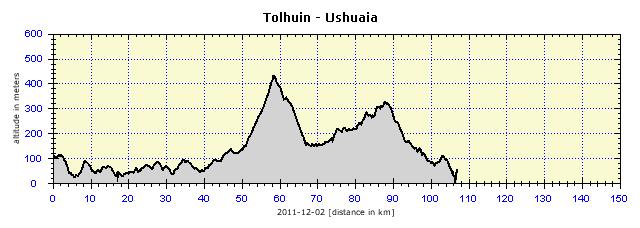
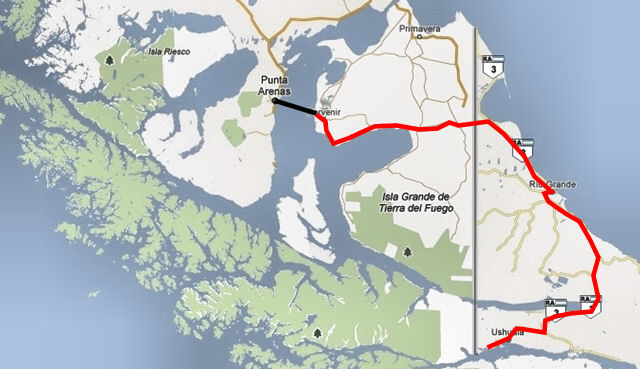
|













































































